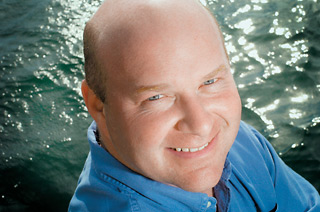Timothy Shank
Associate Scientist
Biology Department
Woods Hole Oceanographic Institution
Dr. Tim Shank is the lead biologist on the expedition.
More about Tim...
Role in the expedition?
I’m the lead biologist. My goal is to bring animals back from the Gakkel Ridge vent systems and document the kind of conditions that they’re living under.
Where did you grow up?
I grew up in eastern North Carolina, on the coast, and spent a lot of my childhood on the beaches of North Carolina, looking at animals, and spending a lot of vacation time there and appreciating the ocean. It was there that I got my first start looking at animals with my brothers, and through the years I’ve always kept going back to the oceans. When I graduated from high school I moved to the beach and life-guarded for two years and kept taking courses before I went to the University of North Carolina at Chapel Hill, where I got a degree in biology.
How did you get interested in deep-sea biology?
I didn’t really learn about chemosynthetic life—life that uses energy from the ocean waters instead of the sun—until 1984, when my professor at the University of North Carolina at Chapel Hill came back from an Alvin cruise off of Florida, where they had found these unique life forms associated with hydrocarbon seeps. He was showing pictures and photographs of animals in the seep environments off of Florida and describing how he went in Alvin, and it was that day that I knew that I had to be a deep-sea biologist.
Why you do what you do?
The work I do finding new life forms on our own planet and learning how they came to be the way, are to me a treasure and a miracle combined. I also love the idea of relating it to people, and I love the idea of seeing students light up when they understand a biological system. To see them learning and appreciating it—they want to discover more about life on Earth—that’s perfect for me. That’s why I do what I do.



